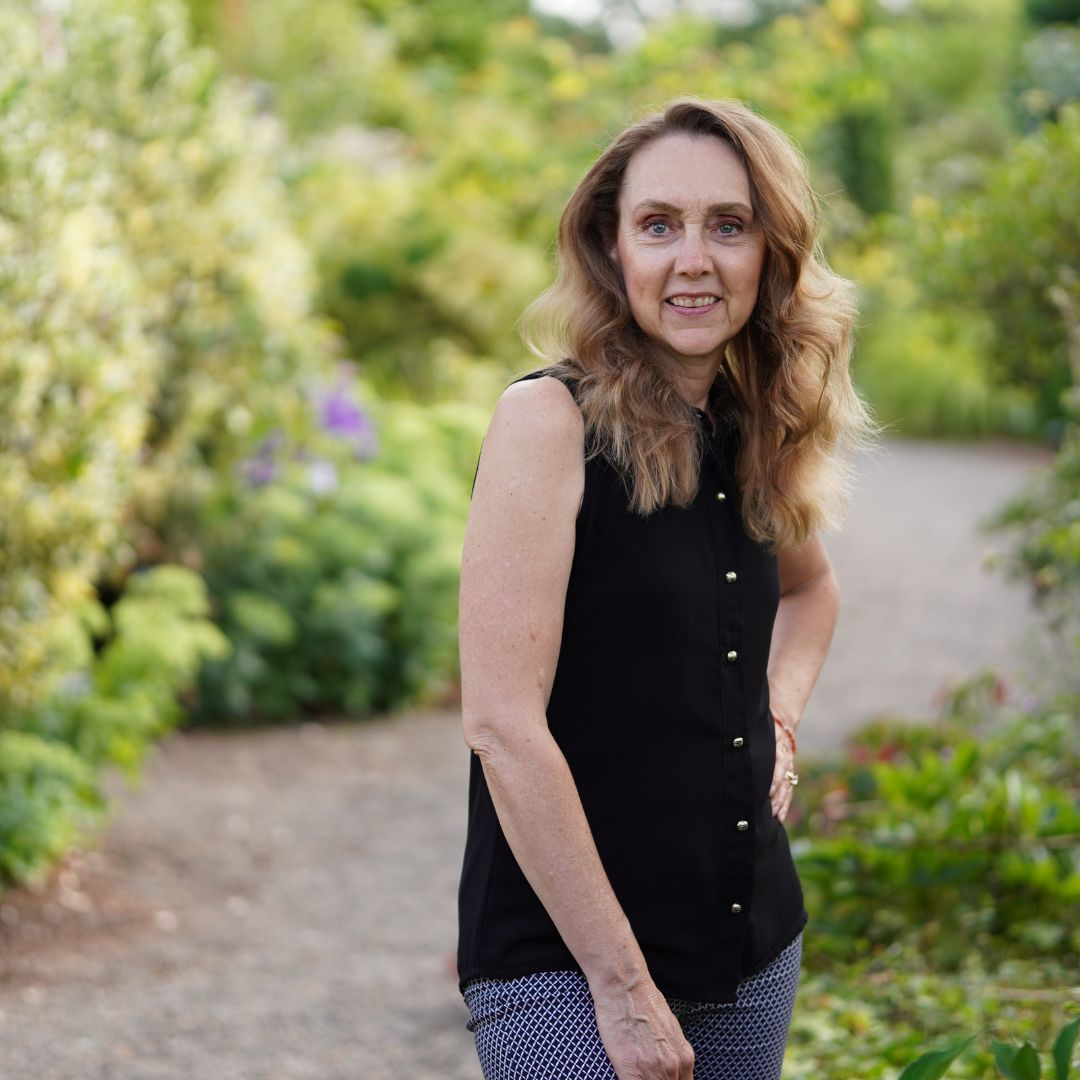I don’t eat out much. It comes with the territory when you live on an entirely plant-based diet. It’s just easier to cook so you know where your food comes from.
But Portland is a foodie community, and there are a lot of plant-based options.
If we’re out and about, running errands, occasionally we’ll stop by Native Foods Cafe. They do a great job of providing reasonably healthy foods in a quick casual atmosphere.
If you look at their menu, they name their food “burgers”, “meatballs”, “bacon”, or “steak”. I have a love/hate relationship with that. I get it; it’s easier to describe the entree by using familiar terms. But it can also be a bit misleading. Every time I visit, I notice at least one potential customer wander in, discover it isn’t the “real thing”, and just as quickly disappear out the door.
It takes a lot to change the world.
Why I Changed My Eating Habits
In 1994, my father died of a massive heart attack. He was a steak and potatoes man. He grew up in the midwest, and loved his traditional midwest meals.
Not long after he died, I started asking: why? Why did a 54 year old man die of a heart attack? Could it have been prevented? As I was just digging into my research, my mom suffered a massive stroke … at the age of 54.
My search for answers took on a new life.
Several years later, my daughter declared herself a vegetarian at the age of three. And that’s when things slowly started coming together. I started reading everything I could from doctors and cardiologists like Dean Ornish, Caldwell Esselstyn, John McDougall, Joel Furhman, and more.
Turns out there is a “cure” for things like heart disease, diabetes, even cancers. Food. Now, after a quarter-century of research, I’m more convinced than ever that it has to do with our food supply.
The Sickness Is Overwhelming
My intimate connection with heart disease has quite literally changed my life. I’m hyper aware of the diseases prevalent throughout our American society. (It’s spreading across the world. But it’s currently worse – epidemic – in the US.)
NOTE: These are my views after twenty-five years of studying, researching, and investigating our food supply.
I have friends and relatives who died of heart disease in their 50s.
I have friends and relatives who had heart attacks in their 40s.
I have friends and relatives with diabetes.
I have friends and relatives with chronic health conditions.
I have friends and relatives with all kinds of cancer.
I have friends and relatives who are morbidly obese.
The list goes on and on.
I don’t judge. But I watch. And I have an internal battle with myself, knowing I have at least part of the answer to their troubles. Food – I want to scream it sometimes. Change the way you eat, and you’ll change your health.
But I don’t. I won’t.
So I blog instead. It’s my little way of screaming my beliefs to the world.
Veganuary is still in full swing. And I’d like to think that if you start the process in January, you’re more likely to continue your good eating habits throughout the year.
The World Health Organization has established cigarette smoking to be bad for your health. It’s known to be carcinogenic to humans. Not only is tobacco harmful, but there’s also sufficient evidence the products used to make cigarettes can be harmful too. Therefore it comes with a warning to alert all who buy and use the product as to its toxicity.
Yet we haven’t done the same with a lot of the foods we bring home and serve every day. The World Health Organization classified red meat as a group 2A carcinogenic, showing positive associations between eating red meat and developing colorectal cancer. It’s listed processed meat as a group 1 carcinogenic, having strong evidence that eating these products will in face increase development of cancers.
And yet we don’t put warnings on these types of foods, nor do we pay it any sort of attention.
I asked someone close to me who was dealing with cancer if they had received any type of nutrition training before they began treatment for their cancer. The answer was: no.
It didn’t surprise me.
Doctors aren’t trained in speaking about nutrition.
So we’re left to find out as much as we can about it on our own.
Making changes to eating plant-based every day
Eating a plant-based diet is the healthiest thing you can do for your body and for the planet. I talk about it here and here and here.
What can you do to start implementing it into your life today?
Read about it
You become more educated the more you read about the benefits it can have on your life. So start reading about it.
If you’re not ready to buy a bunch of cookbooks, start following people on Instagram or create a pinboard on Pinterest with your favorites.
With just a few clicks, you’ll find a wide variety of people to follow who can help you stick with a plant based diet. I love Thrive Magazine’s Instagram page, and often click through to new recipes. And I was recently recommended Bosh! – their recipes look yummy! I can’t wait to try them.
Swap foods one at a time
I hate it when someone who eats a Western diet suddenly makes a break and declares they are going vegan. Why? Because I know it won’t stick.
You’re much better off swapping out one thing at a time.
Make this the month you no longer eat red meat. Make the change and make it stick.
Then find something new to trade out for your favorites. Love spaghetti? Change out your meat sauce and make a lentil bolognese instead. Swap your favorite chicken curry recipe for a chickpea curry instead.
And don’t give up.
My favorite food is Pad Thai. That’s how I judge every Asian restaurant I go to. I tried to make my own many, many times. It took a lot of experimenting to find the perfect recipe. But I did it, and know I cook it at least once a month.
Change one meal at a time
Start with changing out one meal at a time. I think breakfast is the easiest meal to change. Create your own granola. Or add mix up a smoothie with green vegetables and a few berries.
Then move on from there.
You can try challenges to help you with the process too. #MeatlessMonday is a great way to be a part of a national movement of replacing your normal recipes with meatless options.
The more you are aware of what you put into your meal planning, the more fun you’ll have with it.
This is one of my favorite soups.

Thai Soup with Ginger, Lemongrass, and Crispy Tofu
Ingredients
2 tsp coconut oil
1 package organic extra firm tofu
¼ cup soy sauce
1 tbsp agave
1 tsp sesame oil
1 yellow onion, diced
2 medium carrots, diced
3 green onions, chopped
4 cloves garlic, minced
1 inch piece of ginger, chopped
1 stalk lemongrass
3 cups vegetable broth
1 can coconut milk
1 lime, zest and juice
Cooked rice
Cilantro
Peanuts
- Cube the tofu and put it in a medium sized bowl. Mix together soy sauce, agave, and sesame oil. Pour soy sauce mixture over, coating tofu completely.
- Heat 1 tsp coconut oil in a soup pot over medium-high heat. Add tofu to hot pan and brown on all sides. Remove, and set aside.
- In the same pot, heat remaining coconut oil. Add onion and carrot and cook until soft. Add half the green onions, garlic, ginger, and lemongrass. (Use the entire lemongrass stalk, cutting an X at the bottom of the root to help release flavors.) Cook for 2-3 minutes until fragrant.
- Add the vegetable broth and coconut milk and bring to a boil. Reduce to a simmer and cook for 15 minutes.
- Remove lemongrass from the pan and toss it. Season with salt and pepper to taste. Add the lime zest and juice.
- Place a serving of rice into each bowl. Pour the broth over the rice. Add tofu, green onions, cilantro, and peanuts.
- Enjoy!


+ show Comments
- Hide Comments
add a comment